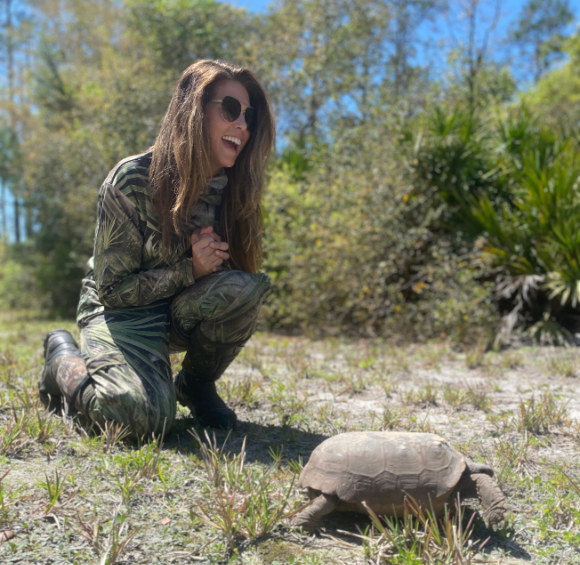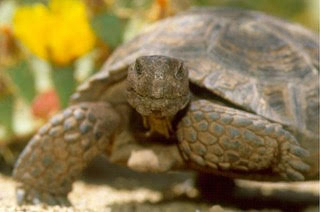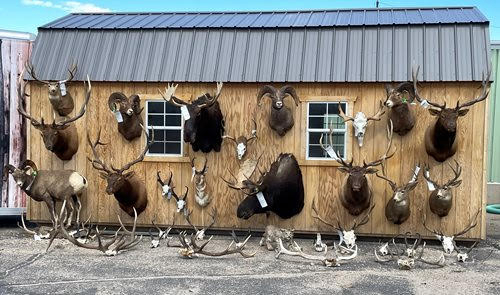Animal Rights Groups Sue Administration
Lawsuit Aims to Force Trump to Protect Endangered Species Nationwide
Administration Stalling Safeguards for Sierra Nevada Red Fox, Longfin Smelt, Harlequin Butterfly, Other Critically Imperiled Wildlife
SAN FRANCISCO— The Center for Biological Diversity and San Francisco Baykeeper sued the Trump administration today for failing to protect eight highly imperiled species across the country under the Endangered Species Act.
The U.S. Fish and Wildlife Service determined the longfin smelt, Hermes copper butterfly, Sierra Nevada red fox, red tree vole, eastern gopher tortoise, Berry Cave salamander, Puerto Rico harlequin butterfly and a large flowering shrub called marrón bacora all warrant endangered species protections. The agency has failed to actually provide such protection.
“Delay means death for these creatures,” said Noah Greenwald, the Center’s endangered species director. “The Endangered Species Act is incredibly effective, but the Trump administration is stalling safeguards that could pull these species back from the brink of oblivion. Refusing to protect these highly imperiled animals and plants signals a sickening hostility to America’s natural heritage.”
United Nations scientists recently released a report finding that as many as a million species are at risk of extinction. Yet the Trump administration has been delaying protections for a wide array of critically imperiled wildlife.
The administration has listed only 17 species under the Endangered Species Act — the fewest protected by any administration in its first two years since the Reagan administration. By comparison, the Obama administration listed 72 species and the Clinton administration listed 196 during their first two years.
Today’s lawsuit was filed in federal court in San Francisco.
Species Background
All eight species have been found by the Fish and Wildlife Service to warrant protection, but the agency has delayed action, arguing that it is precluded by the listing of other species. Under the Endangered Species Act, the agency can delay protection only if it is making “expeditious progress” listing other species, which is not the case.
Longfin smelt. Longfin smelt were once one of the most abundant fishes in the San Francisco Bay and Delta; historically, they were so common that their numbers supported a commercial fishery. Because of poor management of California’s largest estuary ecosystem, which has allowed excessive water diversions and reduced freshwater flow into the Bay, the longfin smelt has suffered catastrophic declines in the past 20 years.
Sierra Nevada red fox. Sierra Nevada red foxes live in remote, high mountains in the Sierra Nevada and Cascade ranges of California and Oregon. The Center petitioned for protection in 2011 and filed a lawsuit in 2013 to force the Service to decide on the animal’s protection. Fox populations have declined dramatically due to logging, grazing, poisoning, trapping and off-road and over-snow vehicles. Only around 70 adult foxes are known to survive in California. Oregon’s small population size is unknown.
Red tree vole, North Coast population. The North Coast population of red tree voles is a distinct population of the red tree vole that is only found along Oregon’s northern coast. Red tree voles live most of their lives in trees. They have been nearly wiped out by a long history of logging and wildfires in the North Coast, including the Tillamook and Clatsop state forests.
Puerto Rico harlequin butterfly. This small butterfly is associated with rare soil types likely related to the nectar plants it needs for feeding. The butterfly is only known from the Mariaco Commonwealth Forest and the coastal cliffs in a small area in Quebradillas, where it is severely threatened by urban sprawl. Only a handful of individuals have been seen in recent years, and the butterfly’s status following Hurricane Maria is unknown.
Eastern gopher tortoise. Gopher tortoises in Louisiana, Mississippi and western Alabama are protected under the Endangered Species Act, but those in eastern Alabama, Florida, Georgia and South Carolina still await protections. The tortoises need large, unfragmented long-leaf pine forests to survive. They are severely threatened by development-caused habitat loss and fragmentation, which limits food availability and options for burrow sites. It also and exposes them to mortality from being crushed in their burrows during construction, run over by cars or shot.
Hermes copper butterfly. A brightly colored butterfly whose survival depends on its host plant, the spiny redberry, the Hermes copper occupied many coastal areas of southern California prior to urbanization. It is now limited to a small number of foothill and mountain areas up to 45 miles from the ocean, where it remains threatened by urban sprawl, fire and climate change.
Berry Cave salamander. These salamanders live in underground caves with flowing water, where they feed on small insects in eastern Tennessee outside of Knoxville. They grow to 9 inches long. They’re threatened by declining water quality caused by urban sprawl, as well as by pollution from logging, pesticides and quarrying. Salamanders are particularly vulnerable to pollution because toxins are easily absorbed through their thin, permeable skin.
Marrón bacora. This unique shrub, which occurs in dry forest on St. John’s, Virgin Islands and can reach heights of 10 feet, was believed extinct until 1992, when it was rediscovered. It is threatened by urban sprawl and climate change.







